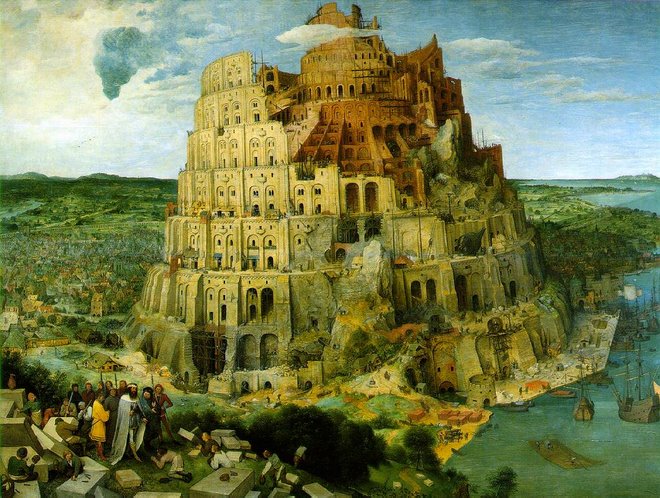
 Some time ago, I discovered this amazing double CD of Chinese traditional music. At last, I decided to post it for the quality of the music, although I can’t give you any additional info aside from its title.
Some time ago, I discovered this amazing double CD of Chinese traditional music. At last, I decided to post it for the quality of the music, although I can’t give you any additional info aside from its title. Well, maybe
some Chinese-speaking friend out there can give us a little help... It would be truly appreciated!
 «The origins of Chinese music can be traced back to distant antiquity. While European music was at its infancy 3,000 years ago, a complete musical theory and sophisticated musical instruments have already blossomed in China, owing largely to the orthodox ritual music advocated by Confucius. By the Han Dynasty (206 B.C.-220 A.D.), the imperial court has created a Music Bureau to oversee the collection and editing of ancient tunes and folk songs. Commercial contacts with Central Asia brought foreign music to China in the form of the p'i-p'a , or lute, and the hu-ch'in , a vertically-held violin. Composers were quick to adapt the new tunes and improve Chinese music. By the time of Emperor Hsuan Tsung (r. 713-755 A.D.) of the T'ang Dynasty , the court has organized the Pear Garden Academy song and dance troupe, cultivating a large number of musicians, and thus laying a firm foundation for Chinese music.» (From the net)
«The origins of Chinese music can be traced back to distant antiquity. While European music was at its infancy 3,000 years ago, a complete musical theory and sophisticated musical instruments have already blossomed in China, owing largely to the orthodox ritual music advocated by Confucius. By the Han Dynasty (206 B.C.-220 A.D.), the imperial court has created a Music Bureau to oversee the collection and editing of ancient tunes and folk songs. Commercial contacts with Central Asia brought foreign music to China in the form of the p'i-p'a , or lute, and the hu-ch'in , a vertically-held violin. Composers were quick to adapt the new tunes and improve Chinese music. By the time of Emperor Hsuan Tsung (r. 713-755 A.D.) of the T'ang Dynasty , the court has organized the Pear Garden Academy song and dance troupe, cultivating a large number of musicians, and thus laying a firm foundation for Chinese music.» (From the net)

Landscape, Yunnan Province
Incense sticks, Yunnan Province
«There is a saying that 99 percent of all Chinese are farmers, and it's true that most Chinese music – excluding the classical, operatic and art music traditions – originates with rural, peasant traditions, and has deep regional roots. For centuries, farmers in the north have practiced wind-and-percussion ensembles. Ding County of Hebei is famous for artistry in the double reeds: the guanzi (double-reed pipe), the haidi (small oboe) and the suona (Northern oboe). In Xian, the Western Capital of China, musicians for centuries practiced the sheng (a free-reed mouth organ) and di (reeded transverse flute) for joining ensembles called Xian drum music. In the early 1960s, Liu Mingyuan and the Xinying Traditional Orchestra wrote the popular "Years of Happiness" based on rural traditional music. Eastern China is "fiddle" country, and bowed instruments such as the erhu, zhonghu, and the gaohu are popular as both solo and ensemble instruments. The Zhejiang, Jiangsu, Shandong provinces have produced a lot of fiddlers, including Wang Dianyu, Zhao Yuchai and the influential A Bing (1893–1950), a street musician famous for his many compositions, including his most famous "Listen to the Pine." In the south, folk music is often combined with dance. The huadeng is a large class of regional dance. Huadeng is known in the West as the "lantern dance" and translates literally as "flower lantern" – but has many other names: "jumping the lantern," "playing with the lantern" and lantern theater. The dance is popular in Yunnan, Guizhou, Sichuan and their surrounding areas (all in southern or southwestern China). The steps vary from place to place, but the dancers all carry lanterns or fans and they also sing.» (National Geographic)

Downtown Hong Kong
 «Nell’antica Cina la musica era considerata arte destinata a perfezionare l’educazione dei giovani. La musica non solo aveva funzione didattica ma veniva investita di significati metafisici; era infatti considerata parte di un complesso sistema cosmologico e dalla sua perfetta esecuzione si faceva derivare il delicato equilibrio fra il Cielo e la Terra, e quindi, per estensione, la stabilità dell’Impero.
«Nell’antica Cina la musica era considerata arte destinata a perfezionare l’educazione dei giovani. La musica non solo aveva funzione didattica ma veniva investita di significati metafisici; era infatti considerata parte di un complesso sistema cosmologico e dalla sua perfetta esecuzione si faceva derivare il delicato equilibrio fra il Cielo e la Terra, e quindi, per estensione, la stabilità dell’Impero.
Nel Liji "Memoriale dei riti", il sistema musicale cinese viene spiegato in base a 5 gradi fondamentali denominati gong (palazzo), shang (deliberazione), jiao (corno), zhi (prova), yu (ali) e viene fatto corrispondere ad altri "gruppi di cinque", fattori costitutivi e caratterizzanti la vita cosmica e umana. Così, per esempio, secondo tale sistema filosofico-musicale, la nota fondamentale gong (fa) corrisponde all’elemento terra, al punto cardinale centro, al colore giallo, al sapore dolce, al viscere cuore, al numero cinque, alla funzione imperatore ecc. Analogamente la nota shang (sol) rappresenta i ministri; la nota jiao (la) rappresenta il popolo; la nota zhi (do) e yu (re) rappresentano rispettivamente i servizi pubblici e l’insieme dei prodotti; oltre, naturalmente, a ulteriori parallelismi tra ciascuna nota e un elemento, un punto cardinale ecc. La valenza magica attribuita ai suoni, le loro correlazioni cosmologiche e filosofiche possono spiegare certe peculiarità della musica cinese tradizionale; la sua lentezza e il suo mettere in evidenza la materialità di ciascun suono, come fonte di meditazione filosofica. Il do, come dominante in una composizione musicale, stava a indicare che il pezzo era stato composto per cerimonie sacrificali dedicate al Cielo, mentre la nota re veniva impiegata nelle celebrazioni che riguardavano gli antenati e la primavera. Il sol poteva riferirsi soltanto a brani che concernevano la terra, mentre il la celebrava l’equinozio d’autunno, l’imperatrice e la luna… (continua)
Check also The Internet Chinese Music Archive
Download links:
Disc 1: http://sharebee.com/189baf4b
Disc 2: http://sharebee.com/eac6304e














6 comments:
Oh, merci ! J'étais en manque de musique chinoise... je l'écoute en vous écrivant, et je me sens un peu chinois. Vive le monde et ses musiques !
hey, thanks for your great site, i really love all the wonderful stuff here! i tried to figure out the track titles. here are my results:
-----------------------
Gu Yue Xin Yun (Ancient Music, New Sound)
Track - Chinese Title (English Title) - [Instrument]
[Disc1]
01 - Yang Chun Bai Xue (Snow on a Sunny Spring Day) - [Pipa]
02 - Chun Jiang Hua Yue Ye (Moonlight over the Spring River) - [Zheng]
03 - Guang Ling San (Guangling Tune) - [Zheng]
04 - Yu Qiao Wenda (Dialogue between Fisherman and Woodcutter) - [Guqin]
05 - Feng Qiu Huang (The Phoenix Seeks his Mate) - [Guqin]
06 - Peng Pai Duzou (Peng Pai solo[?])
07 - Mei Hua San Nong (Three Variations on 'Plum Blossom') - [Plucked string music]
08 - Shi Mian Maifu (Ambush on All Sides) - [Pipa]
09 - Yu Da Bajiao (Rain Falls on the Leaves of the Banana Tree) - [Guangdong Music]
10 - Yang Guan San Die (Farewell at Yang Guan) - [One-tube pipe]
11 - Tan Qi Wo Xinai De Tu Pipa (Playing My Beloved Pipa) - [Xiao Hong]
12 - Zi Zhu Diao (Purple Bamboo Melody) - [Jiangnan string and wind]
13 - Zhong Hua Liu Ban ([?]) - [Jiangnan string and wind]
14 - Zhi Dao Bu Zhi Dao (Do You Know?) - [Hulu Si]
[Disc2]
01 - Xi Yang Yang (Full of Joy) - [Folk music ensemble]
02 - Hanya Xishui (Jackdaws Playing in the Water) - [Zheng]
03 - Hujia Shiba Pai (Eighteen Songs of a Nomad Flute) - [Guqin]
04 - Gaoshan Liushui (High Mountain, Flowing Water) - [Zheng]
05 - Bainiao Chaofeng (All the Birds Paying Homage to the Phoenix) - [Solo]
06 - Dalang Tao Sha (The Wave Washes the Beach) - [Pipa]
07 - Hua Mei Tiao Jia (Thrush Jumping On Trellies) - [Chiu Chow drum]
08 - Xiao Xiang Shui Yun (The Cloudy Water) - [Guqin]
09 - Fengshou Luogu (Harvest Gongs and Drums) - [Drum]
10 - Chun Xiao Yin (Song for a Spring Dawn) - [Guqin]
11 - Zhan Tai Feng (Battling the Typhoon) - [Zheng]
12 - Jin She Kuang Wu (Golden Snakes' Dance) - [Folk music ensemble]
-----------------------
(no warranty for correctness of the titles, as i don't know any chinese; i just used a dictionary for transliteration (see link below) and put the results into google; seemed to work fine, though)
http://www.chinaboard.de/de/chinesisch_deutsch.php
greets, nestor
Many thanx, Nestor!
The results seem worth of the effort!
_http://rapidshare.com/files/7966918/GuYueXinYun.part1.rar
_http://rapidshare.com/files/7960214/GuYueXinYun.part2.rar
_http://rapidshare.com/files/7941730/GuYueXinYun.part3.rar
_http://rapidshare.com/files/7934757/GuYueXinYun.part4.rar
Thanks very much for titles in English!!
This won't really have success, I believe this way.
Post a Comment